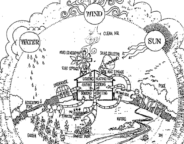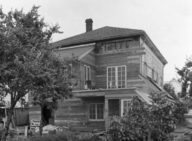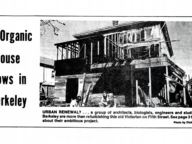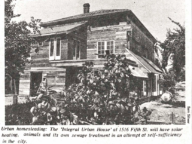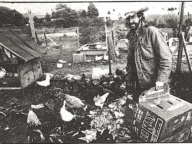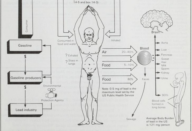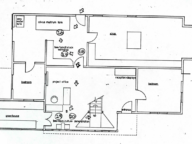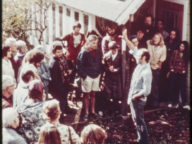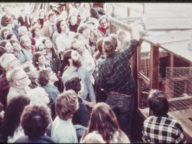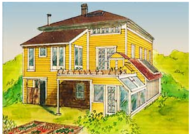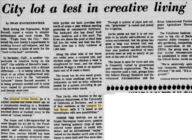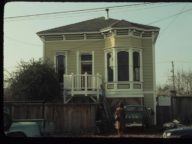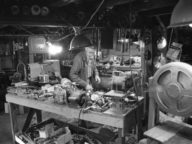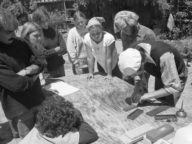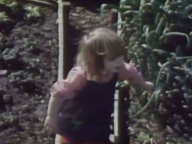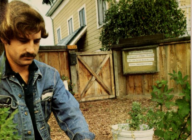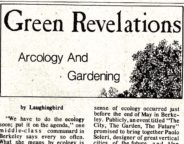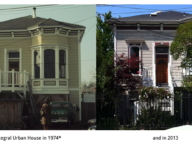
This self-guided tour provided a way for curious people to explore the Integral Urban House on their own. Attending one of the public open houses on Saturday afternoons, they could learn about the house and its amenities themselves. This exposure emphasizes community-building and welcomes people into a countercultural space that is both less radical and more familiar to them.
The introduction, written by house manager Tom Javits, features a call to membership as a means to continue supporting the work the Integral Urban House does. As with other movements, the house was reliant on the contributions of other people believing in the same mission.
At first glance, the floor plan looks very typical; one can see multiple bedrooms, a kitchen, a couple bathrooms, an office, and a balcony. But at a closer look, one can see labels for the solar collector, greywater tank, bee/aquaculture, and clivus multrum tank. These features are hallmarks of the Integral Urban House and characterize its commitment to experimentation and ecological living. Blurring the lines between these innovative appliances and the mundane household amenities shows curious people how integrated these functions are with the house’s operation.
Within the guide, each section focuses on a particular feature of the house. With clear language, it gives recommendations for the solar heater’s water temperature and approximate egg and meat yields from the chicken coops, as well as references to other literature for further information. It also explains why they do not use synthetic chemicals or fertilizers, due to harmful environmental consequences. Most notably, the guide educates its audience on how to do this all within the constraints of the urban environment.

